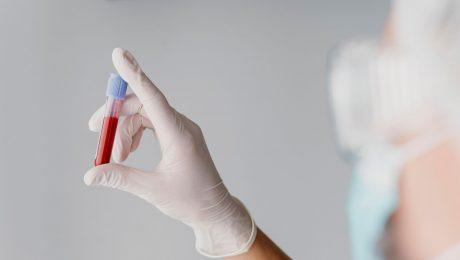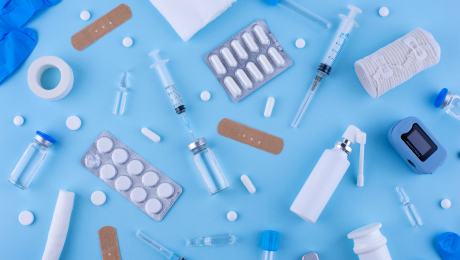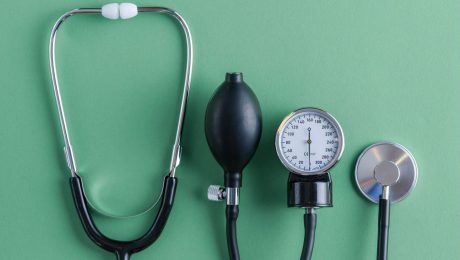What Is An Example Of A Parallel Import In The Global Healthcare Marketplace?
Welcome to the dynamic world of global healthcare trade, where wholesalers play a pivotal role in ensuring the seamless distribution of essential products. In this blog, we will explore the intriguing realm of parallel imports and how wholesalers can leverage this phenomenon to navigate the complexities of the healthcare market. Specifically, we’ll focus on vaccinations, medicinal products, medical devices, and medical consumables, shedding light on opportunities and considerations for wholesalers in this ever-evolving landscape.
Understanding the Wholesaler’s Role
Wholesalers are the backbone of the healthcare supply chain, connecting manufacturers with retailers and healthcare providers. Their ability to adapt to market dynamics and identify cost-effective solutions is crucial for maintaining a steady flow of products to meet demand.
Parallel Imports as a Strategic Advantage
For wholesalers seeking a competitive edge, parallel imports present a strategic avenue. By tapping into genuine, authorized products from international markets, wholesalers can explore cost-effective options without compromising on quality. This is particularly pertinent when dealing with high-demand items like vaccinations, medicinal products, medical devices, and consumables.
Key Considerations for Wholesalers
1. Legal Framework:
– Stay abreast of the legal landscape surrounding parallel imports in different regions. Understanding the regulatory framework ensures compliance and mitigates potential risks.
2. Quality Assurance and Safety Protocols:
– Prioritize partnerships with reputable suppliers and manufacturers to uphold product quality and safety standards. Implement robust quality assurance protocols to build trust with clients.
3. Market Dynamics and Price Variability:
– Analyze market dynamics, identifying price differentials between regions. Parallel imports offer an opportunity to capitalize on these variations, providing wholesalers with a competitive edge in pricing.
4. Adaptability in the Healthcare Ecosystem:
– Embrace flexibility in response to evolving healthcare needs. Wholesalers adept at navigating the landscape of parallel imports can quickly adapt to changing market conditions and customer demands.
5. Building Ethical and Sustainable Practices:
– Demonstrate a commitment to ethical business practices. Balancing affordability with ethical considerations ensures wholesalers contribute positively to the healthcare ecosystem.
Conclusion
In the ever-changing landscape of global healthcare, wholesalers stand at the forefront of ensuring the efficient distribution of critical products. Parallel imports, when approached strategically, can empower wholesalers to enhance their offerings, providing cost-effective solutions without compromising on quality. By navigating the legal, quality, and ethical considerations of parallel imports, wholesalers can position themselves as key players in meeting the diverse and dynamic needs of the healthcare marketplace. Embrace the opportunities presented by parallel imports and unlock new avenues for growth and success in the evolving world of healthcare distribution.
- Published in Importing & Sourcing
Unveiling the Lifesaving Potential: Medicinal Products Derived from Plasma and Blood Lines
In the intricate world of modern medicine, where scientific advancements continuously redefine the boundaries of healing, an often-overlooked hero takes center stage: plasma and blood lines. These unsung elements hold the key to creating a myriad of lifesaving medicinal products that have revolutionized patient care and medical treatments. In this exploration, we delve into the remarkable realm of medicinal products derived from plasma and blood lines, uncovering their life-altering potential and the countless lives they touch.
The Elixir of Life: Plasma-Derived Medicinal Products
At the heart of this medical marvel lies plasma, the golden liquid that courses through our veins. The journey begins with the selfless act of plasma donation, where donors contribute this precious fluid that holds a treasure trove of healing components. Through a meticulous process, plasma is carefully fractionated into its constituent elements, including clotting factors, immunoglobulins, albumin, and more. These components serve as the building blocks for a range of medicinal products that are nothing short of miraculous.
Plasma-derived medicinal products play a pivotal role in treating a diverse array of medical conditions. Clotting factors extracted from plasma are indispensable for individuals with bleeding disorders, allowing them to lead healthier lives. Immunoglobulins, rich with antibodies, empower those with immune deficiencies to combat infections. These products extend a lifeline to individuals battling autoimmune diseases, providing relief and improved quality of life.
Harnessing the Power of Blood Line-Derived Therapies
Venturing further, we uncover the potent potential of blood line-derived therapies. Stem cell treatments and bone marrow transplants, which rely on the compatibility of blood lines, offer a beacon of hope to patients facing conditions such as leukemia and other blood-related disorders. The intricacies of blood line matches underscore the intricate dance between medical science and human biology, as matching blood lines hold the key to successful transplants.
Vaccines and Immunizations: A Shield Forged from Blood Lines
In the realm of preventive medicine, the alliance between blood lines and immunizations is formidable. Bloodline components play a pivotal role in the development of certain vaccines, acting as the foundation for creating antibodies against diseases. Examples abound, with vaccines for hepatitis B utilizing plasma-derived components to provide protection against this potentially deadly virus.
Pioneering Advanced Medical Treatments
The application of plasma and blood lines doesn’t stop at traditional treatments. The realm of regenerative medicine and wound healing embraces their potential. Platelet-rich plasma (PRP), derived from blood lines, has found a home in orthopedics and tissue regeneration. This revolutionary therapy accelerates healing, offering new hope for those seeking faster recovery and improved outcomes.
Shining Light on Rare Diseases with Plasma-Derived Products
For those navigating the challenges of rare and orphan diseases, plasma-derived products emerge as beacons of light. Conditions like hemophilia and von Willebrand disease find solace in plasma-derived clotting factors, providing a lifeline to those who previously faced insurmountable obstacles. These treatments are not just medical interventions; they are the catalysts of improved quality of life, transforming the daily experiences of patients and their families.
Balancing Safety, Regulations, and Ethics
As we continue our journey, we encounter the guardians of safety, regulations, and ethics that guide the realm of plasma and blood line-derived products. Rigorous safety measures are meticulously followed during collection and processing to ensure the integrity of these vital elements. Regulatory bodies set stringent standards to guarantee the efficacy and safety of medicinal products, ensuring they bring healing without harm. Alongside this, the ethical considerations surrounding plasma donation and its use underscore the importance of this noble act in advancing medical science and patient care.
Illuminating the Path to Future Possibilities
As we look to the future, the horizon of possibilities widens. Ongoing research and advancements in plasma and blood line-derived treatments hold promise for personalized medicine and gene therapies. The very blueprint of our biology, stored in our blood lines, holds clues to innovative treatments that could reshape medical landscapes. The boundaries of what is possible continue to be pushed, leading us to imagine a future where even more lives are saved and transformed.
Embracing the Miracle Within
In the intricate tapestry of medicine, plasma and blood lines stand as reminders of the marvels that can be unlocked through science, compassion, and human innovation. The medicinal products derived from these elements are not just molecules; they are vessels of hope, healing, and transformation. As we conclude our journey, let us be inspired to appreciate the significance of plasma donation, support ongoing research, and honor the lifesaving potential that resides within each of us.
- Published in Plasma and Bloodline
Understanding Oncology: Exploring the Basics of Cancer Treatment
Cancer, a complex group of diseases characterized by abnormal cell growth, is a major global health concern. Fortunately, the field of oncology has made significant strides in understanding and treating various forms of cancer. In this blog, we delve into the fundamental aspects of cancer treatment, focusing on the role of oncology medicine and highlighting the contributions of Elis Ilac in providing these essential treatments.
The Basics of Cancer Treatment: A Multifaceted Approach
Cancer treatment is a multifaceted journey that requires a comprehensive approach. It involves a combination of medical disciplines, therapies, and interventions designed to target and eradicate cancer cells while minimizing damage to healthy cells. The primary methods of cancer treatment include:
Surgery: Surgical procedures involve the removal of cancerous tumors and adjacent tissues. It is often the first step in treating solid tumors and can be curative or palliative.
Chemotherapy: Chemotherapy uses drugs to target and destroy cancer cells. These drugs can be administered orally or intravenously, and they work by disrupting the growth and division of rapidly multiplying cells.
Radiation Therapy: This treatment involves the use of high-energy radiation to damage and destroy cancer cells. It is often used in combination with surgery or chemotherapy.
Immunotherapy: Immunotherapy harnesses the body’s immune system to recognize and attack cancer cells. It has shown promising results in various types of cancer.
Targeted Therapy: Targeted therapy focuses on specific molecules involved in cancer growth. This approach aims to disrupt the signals that promote cancer cell growth and survival.
Precision Medicine: Precision medicine involves tailoring treatments to individual patients based on their genetic makeup and the specific characteristics of their cancer.
The Role of Oncology Medicine: Providing Hope and Healing
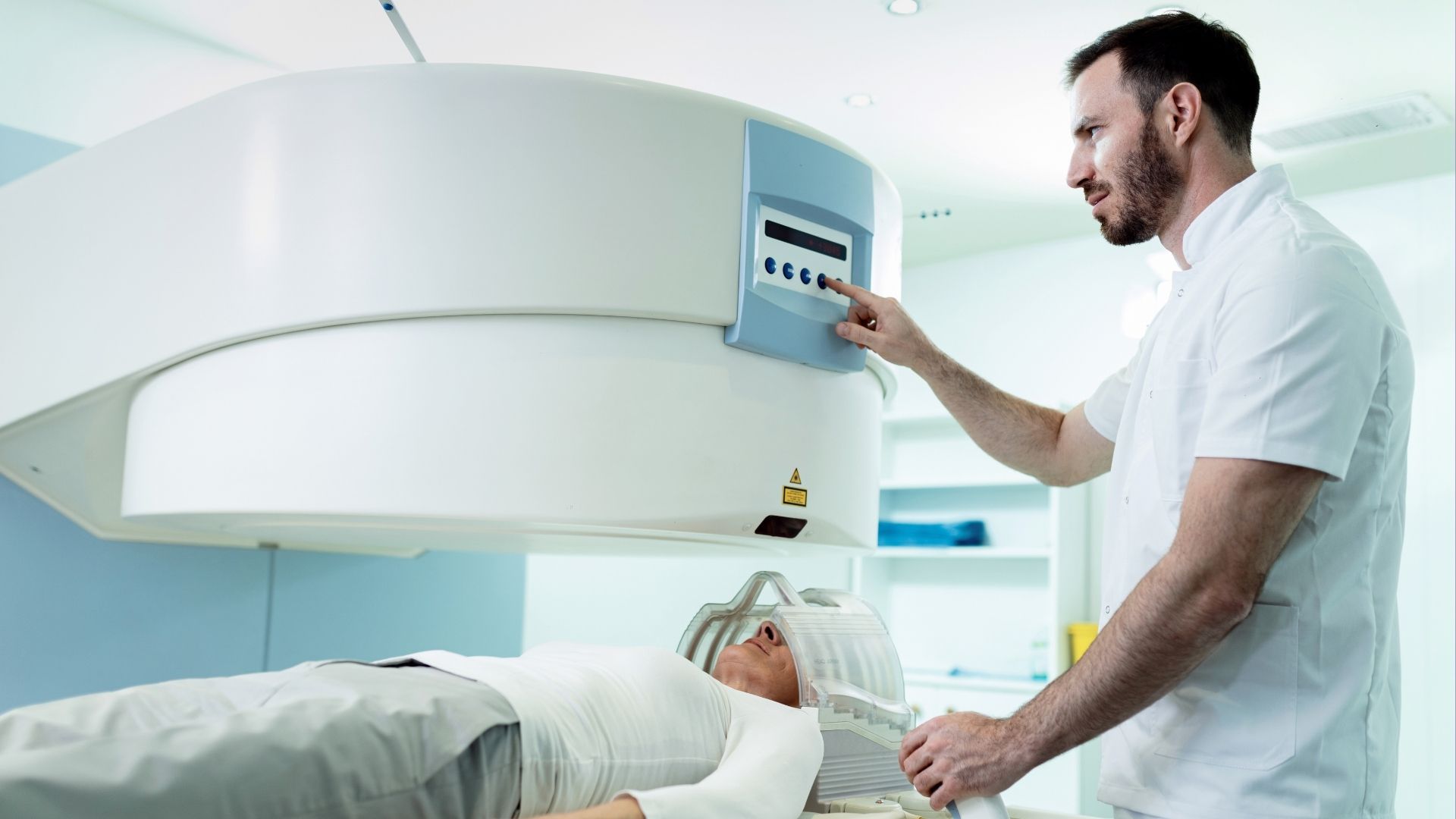
Oncology medicine plays a pivotal role in cancer treatment. These medications are designed to specifically target cancer cells or modulate the body’s response to the disease. They range from traditional chemotherapy drugs to newer, more targeted therapies. Elis Ilac, a reputable pharmaceutical company, has been at the forefront of providing oncology medicine that contributes to better patient outcomes.
Elis Ilac: A Beacon of Hope in Cancer Treatment
Elis Ilac is a distinguished name in the field of pharmaceuticals, with a special focus on oncology medicine. The company’s dedication to research and innovation has resulted in the development of cutting-edge treatments that make a difference in the lives of cancer patients. Through a commitment to quality, safety, and efficacy, Elis Ilac has earned the trust of healthcare professionals and patients alike.
Conclusion: Empowering Patients on Their Oncology Journey
Understanding the basics of cancer treatment is crucial for both patients and their caregivers. The journey through cancer treatment can be challenging, but advancements in oncology medicine, along with the dedication of companies like Elis Ilac, offer hope and healing to those facing this diagnosis. As the field of oncology continues to evolve, the synergy between medical science and pharmaceutical innovation holds the promise of brighter days for cancer patients around the world.
- Published in Orphan Line
What Are Medical Consumables?
In the vast and intricate landscape of healthcare, medical consumables are the unsung heroes that silently but significantly contribute to the well-being of patients and the efficacy of medical professionals. These indispensable items, used in every corner of the healthcare sector, encompass a wide range of products designed for a single or limited use. In this blog, we will delve into the world of medical consumables, their diverse forms, and the vital role they play in the field of healthcare.
Meaning of Medical Consumable
Medical consumables are a broad category of healthcare products, designed for one-time or limited usage. They cover an extensive spectrum of items, from the simplest cotton swabs and adhesive bandages to the more complex surgical gloves, syringes, and catheters. The primary reason for their disposable nature is to mitigate the risk of contamination and infection.
List of Medical Consumables
- Protective Gear: Protective gear is of paramount importance in healthcare, especially in sterile environments like operating rooms. This category includes surgical masks, gloves, gowns, and face shields. These items ensure the safety of healthcare professionals by shielding them from potential infections and prevent the spread of diseases.
- Diagnostic Tools: Medical consumables play a pivotal role in diagnostics, offering tools such as test strips, reagents, and lancets. These items are indispensable for a wide range of medical tests, from glucose monitoring for diabetes to pregnancy tests.
- Wound Care Products: Wound care consumables encompass bandages, adhesive tapes, gauze, and wound dressings. They are crucial for covering and protecting wounds, reducing the risk of infection, and facilitating the healing process.
- Intravenous Supplies: The administration of fluids, medications, and nutrients directly into the bloodstream is made possible by consumables used in intravenous therapy. These include IV catheters, needles, syringes, and IV tubing, all of which are essential for patient care.
- Catheters and Drainage Products: Catheters, a common medical consumable, are used to remove or deliver fluids within the body. Additionally, drainage products are employed to manage conditions such as urinary incontinence, significantly improving patient comfort and health.
- Respiratory Care Supplies: The management of respiratory conditions and the maintenance of adequate oxygen levels are crucial in healthcare. Consumables in this category, including oxygen masks, nebulizers, and spirometry mouthpieces, are indispensable for ensuring the well-being of patients with respiratory issues.
- Laboratory Consumables: In laboratory settings, consumables are utilized for various purposes, such as sample collection, testing, and analysis. This category encompasses test tubes, pipettes, culture plates, and microscope slides, all of which are essential for accurate diagnostics and research.
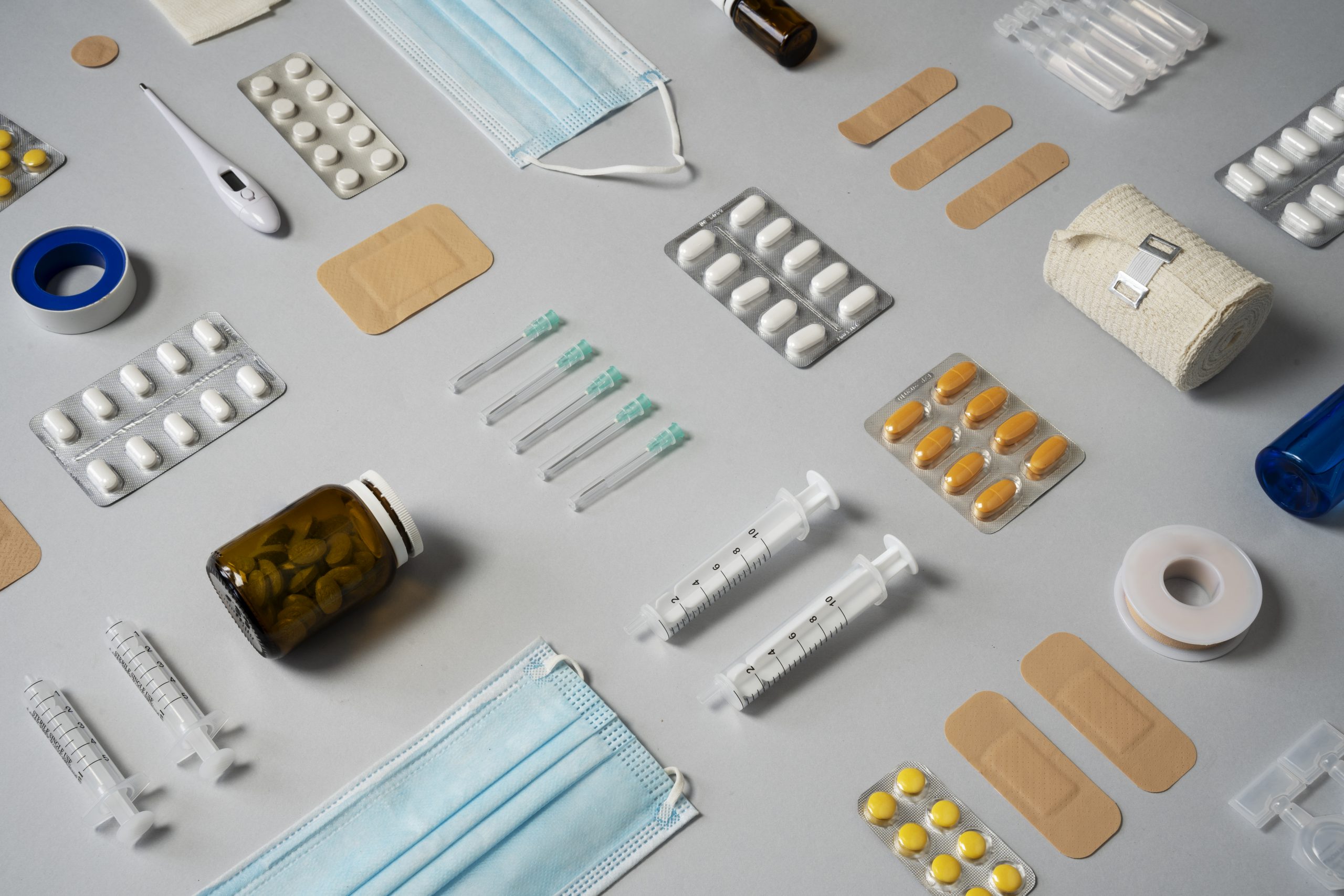
The Importance of Medical Consumables
Medical consumables are the backbone of healthcare for several key reasons:
- Infection Control: The disposable nature of these items reduces the risk of infection transmission. Once used, they are discarded, minimizing the chances of contamination.
- Patient Safety: Medical consumables play a crucial role in ensuring the safety and well-being of patients. From wound care to intravenous therapy, these items are essential for effective and safe treatment.
- Efficiency: The use of consumables streamlines healthcare processes. Healthcare professionals can focus on patient care rather than sterilizing and reusing equipment.
- Research and Diagnosis: In laboratories, consumables are essential for accurate research and diagnosis. They allow for precise sample collection, analysis, and experimentation.
- Cost-Effectiveness: While they are single-use items, medical consumables are cost-effective in the long run. Their use reduces the need for labor-intensive sterilization processes and helps maintain the highest standards of hygiene.
Challenges and Sustainability
The use of medical consumables has grown exponentially in recent years, partly due to the COVID-19 pandemic. This has raised concerns about waste management and environmental impact. Healthcare institutions are increasingly focusing on sustainability, exploring eco-friendly alternatives and efficient waste disposal methods to minimize their carbon footprint.
In conclusion, medical consumables are the unsung heroes of the healthcare sector, supporting every aspect of patient care, from diagnostics to treatment. Their disposable nature not only ensures patient safety but also streamlines healthcare processes. As healthcare continues to evolve, the responsible use and disposal of medical consumables will play an essential role in a more sustainable and efficient healthcare system.
- Published in Medical Consumables
What Is A Medical Device? Examples
In our ever-evolving world of healthcare, medical devices play a pivotal role in enhancing the quality of patient care, improving diagnostics, and revolutionizing treatment methods. In this exploration, we unravel the essence of medical devices, shedding light on their diverse types and unveiling examples that touch lives daily.
What’s a Medical Device?
Medical devices are instruments, apparatuses, machines, or implants specifically designed for medical purposes. They range from simple, everyday tools like thermometers to complex, life-saving devices such as pacemakers. These innovations are crucial in preventing, diagnosing, monitoring, and treating diseases, ultimately contributing to better patient outcomes and improved overall health.
Categories of Medical Devices
1. Diagnostic Devices:
These devices help healthcare professionals identify diseases or conditions. Common examples include blood glucose meters for diabetes management, X-ray machines for imaging, and pregnancy test kits.
2. Therapeutic Devices:
Designed to treat or manage medical conditions, therapeutic devices come in various forms. Examples include nebulizers for respiratory conditions, insulin pumps for diabetes, and infusion pumps for controlled medication delivery.
3. Monitoring Devices:
Monitoring devices keep track of vital signs and physiological parameters. Blood pressure monitors, heart rate monitors, and continuous glucose monitoring systems fall into this category, enabling healthcare providers to make informed decisions about patient care.
4. Surgical Instruments:
Ranging from scalpels to advanced robotic surgical systems, these instruments aid healthcare professionals in performing surgical procedures with precision and efficiency.
5. Implantable Devices:
These devices are placed inside the body to support biological functions or treat medical conditions. Examples include pacemakers for heart rhythm control, cochlear implants for hearing, and artificial joints for orthopedic purposes.
6. Assistive Devices:
Aimed at enhancing the quality of life for individuals with disabilities, assistive devices include hearing aids, wheelchairs, and prosthetic limbs.
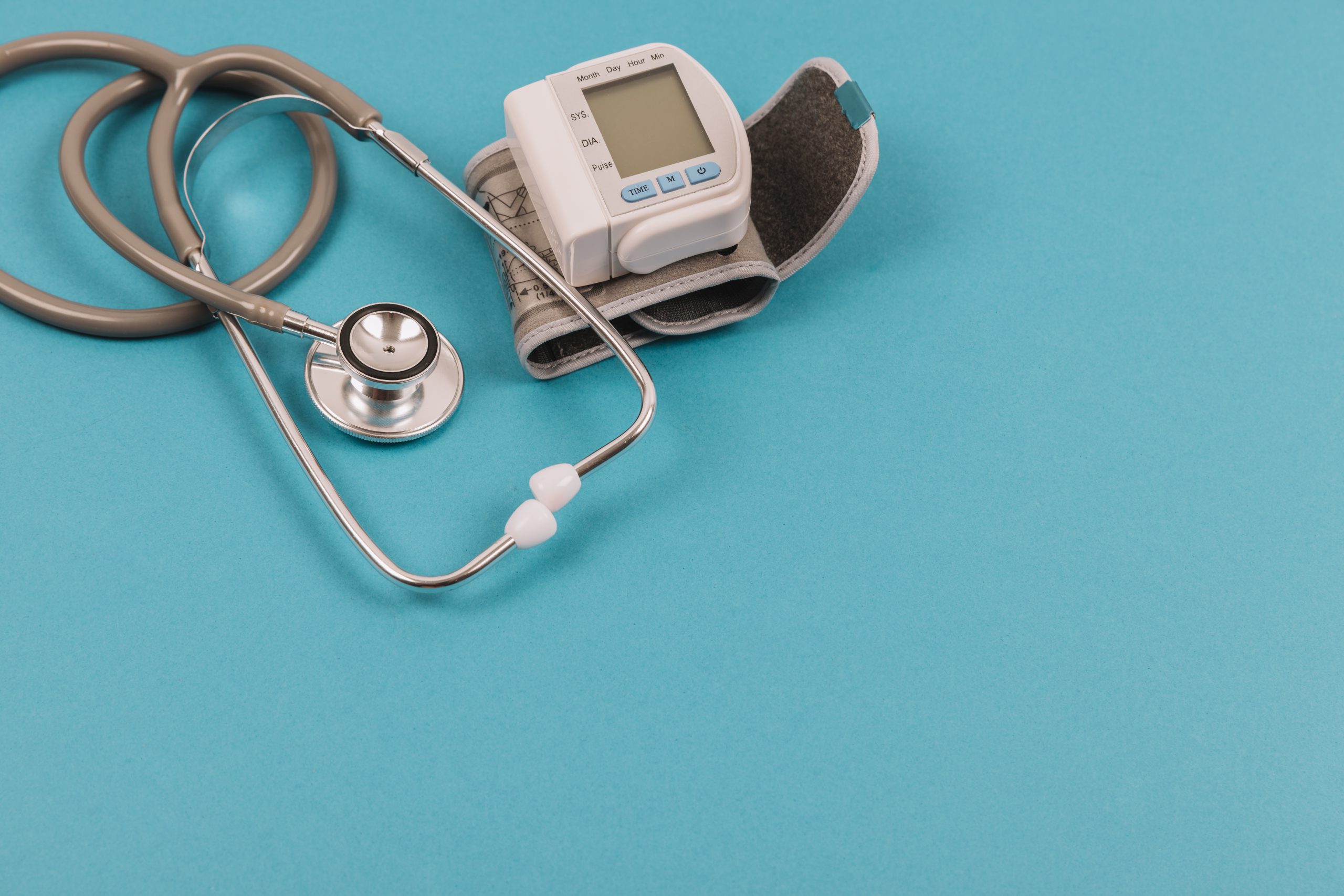
Medical Devices Examples
1. Blood Glucose Monitor:
A staple for individuals managing diabetes, these handheld devices allow users to monitor their blood glucose levels, empowering them to make informed decisions about insulin dosage and dietary choices.
2. MRI Machine:
Magnetic Resonance Imaging (MRI) machines provide detailed images of the body’s internal structures without the use of radiation, aiding in the diagnosis and monitoring of various medical conditions.
3. Pacemaker:
Implanted in individuals with irregular heart rhythms, pacemakers help regulate the heart’s electrical activity, ensuring a steady and healthy heartbeat.
4. Artificial Limbs:
Prosthetic limbs, such as advanced robotic arms and legs, restore mobility and functionality for individuals who have experienced limb loss.
5. Hearing Aid:
A boon for those with hearing impairments, hearing aids amplify sound, allowing users to engage more fully in conversations and daily activities.
6. Infusion Pump:
Commonly used in hospitals, infusion pumps deliver controlled amounts of fluids, medications, or nutrients directly into a patient’s bloodstream.
In the dynamic landscape of healthcare, medical devices stand as beacons of innovation and hope, improving the lives of countless individuals worldwide. From the simplicity of a blood glucose monitor to the complexity of a robotic surgical system, these devices embody the intersection of science, technology, and compassion. As we continue to witness advancements in medical technology, the journey of medical devices unfolds, promising a future where healthcare is more personalized, accessible, and effective for everyone.
- Published in Medical Devices
Breast Cancer
Worldwide, breast cancer accounts for 10.4% of all cancer cases among women, making it the second most common type of non-skin cancer (after lung cancer) and the fifth most common cause of cancer-related death.
Breast Cancer Causes
Previous history of breast cancer
A woman with breast cancer has a higher risk of developing breast cancer in the other breast.
Genetic causes
First-degree relatives (mother, sister, daughter) are the most important in estimating risk. A few second-degree relatives (grandmothers, aunts) with breast cancer may also increase the risk. Breast cancer in a man increases the risk for all close female relatives. The BRCA1 and BRCA2 genes increase the risk of breast cancer by about 40 to 80% when inherited. Women with the BRCA1 gene are more likely to develop breast cancer at an early age.
Hormonal causes
Reasons such as menstrual cycle, early pregnancy, hormonal replacement therapy, use of oral contraceptives can accelerate the process of breast cancer by changing hormone levels.
Lifestyle and nutrition reason
Sedentary lifestyle, high dietary fat intake, especially obesity can cause breast cancer in postmenopausal women. Alcohol use is another cause of breast cancer. The risk increases with the amount of alcohol consumed. It has been determined that women who consume two to five alcoholic beverages a day have approximately one and a half times the risk of developing breast cancer compared to non-drinkers.
Environmental cause
It is known that there is a slight increased risk in women who work with low-dose radiation for a long time, for example X-ray technicians.
Signs and symptoms
The classic symptom of breast cancer is a lump in the breast or armpit. Performing a monthly breast self-exam (BSE) is a good way to become familiar with the texture, cyclic changes, size and skin condition of the breasts. General stimulating properties of breast cancer; breast swelling or lump (mass), armpit swelling (lymph nodes), nipple discharge (clear or bloody), nipple pain, inverted (retracted) nipple, scaly or dimpled skin on the nipple, persistent breast tenderness, and unusual breast pain or discomfort; In the advanced stage of the disease (metastatic), axillary lymph nodes are present with symptoms such as bone pain (bone metastases), shortness of breath (lung metastases), loss of appetite (liver metastases), unintentional weight loss (liver metastases), headaches.
Breast cancer is divided into 3 main subtypes based on the presence or absence of molecular markers for estrogen or progesterone receptors and human epidermal growth factor 2 (ERBB2; formerly HER2): hormone receptor positive/ERBB2 negative (70% of patients), ERBB2 positive (15-20%) and tumors lacking these three standard molecular markers (15%).
Management of Breast Cancer
Operation
Depending on the stage and type of the tumor, lumpectomy (removal of the mass only) or surgical removal of the entire breast (mastectomy) are performed. Standard practice requires the surgeon to determine that the surgically removed tissue has cancer-free margins, indicating that the cancer has been completely excised. If the removed tissue does not have clear boundaries, further operations may be required to remove more tissue.
Radiation therapy
Radiation therapy involves the use of high-energy X-rays or gamma rays that target the tumor or the tumor site after surgery. These rays are highly effective in killing cancer cells that remain after surgery or that recur in the area where the tumor was removed. Radiation therapy for breast cancer is usually done after surgery. The radiation dose should be strong enough to destroy cancer cells. Treatments are typically given over a period of five to seven weeks, performed five days a week.
Chemotherapy
Chemotherapy is the use of anti-cancer drugs to treat cancerous cells. Specific treatment for breast cancer; general health, medical history, age (menstruation), type and stage of cancer, tolerance to certain drugs and procedures, etc. determined by its elements. Chemotherapy treatments are usually given in cycles; one treatment for a certain period of time, followed by a recovery period, then another treatment. Chemotherapy is most often given after surgery, and the dose can be given every three weeks or once every two weeks.
In 1994, Cremophor-EL-paclitaxel was approved by the United States Food and Drug Administration (FDA) for the treatment of metastatic breast cancer in patients who progressed after anthracycline-based combination chemotherapy or relapsed less than 6 months after adjuvant therapy. Docetaxel has a similar mechanism of action as paclitaxel, but is a more potent microtubule inhibitor in vitro.
Several groups of cytotoxic agents active against metastatic breast carcinoma include alkylating agents (cyclophosphamide, thiotepa), antimetabolites (5-fluorouracil, methotrexate), vinca alkaloids (vincristine and vinblastine), and antitumor antibiotics (doxorubicin, mitomycin, and others). In the late 1950s, the first attempts to combine two or more of these agents were initiated to manage metastatic breast carcinoma. The combination of cyclophosphamide, methotrexate, 5-fluorouracil, vincristine and prednisone (also known as the Cooper regimen) and its derivatives (CMF and CMFP) was developed. The antitumor antibiotic doxorubicin (Adriamycin, Adria Laboratories, Columbus, OH) was evaluated clinically and shown to have significant antitumor activity. Doxorubicin was also included in combinations with cyclophosphamide and 5-fluorouracil (CAF, FAC). These combinations were soon found to be the most effective systemic treatments for metastatic breast carcinoma. Therefore, the same combinations that proved effective in metastatic disease (CMF and FAC) were included as adjuvant therapy in lymph node positive and ultimately lymph node negative disease. Numerous clinical studies have shown that CMF and similar regimens produce a 50% or greater reduction in measurable tumor deposits in 40-50% of patients.
- Published in Diseases & Treatments
Cardiovascular disease (CVD)
Cardiovascular disease (CVD) is a general term for conditions affecting the heart or blood vessels.
There are many different types of CVD. 4 of the main types are described on this page.
- Coronary heart disease, Coronary heart disease occurs when the flow of oxygen-rich blood to the heart muscle is blocked or reduced.
- Strokes and TIAs, A stroke is where the blood supply to part of the brain is cut off, which can cause brain damage and possibly death.
- Peripheral arterial disease, Peripheral arterial disease occurs when there’s a blockage in the arteries to the limbs, usually the legs.
- Aortic disease, Aortic diseases are a group of conditions affecting the aorta. This is the largest blood vessel in the body, which carries blood from the heart to the rest of the body.
The exact cause of CVD isn’t clear, but there are lots of things that can increase your risk of getting it. These are called “risk factors”.
This include; High blood pressure, Smoking, High cholesterol, Diabetes, Inactivity, Being overweight or obese, Family history of CVD, Ethnic background, Other risk factors.
The most important behavioural risk factors of heart disease and stroke are unhealthy diet, physical inactivity, tobacco use and harmful use of alcohol. The effects of behavioural risk factors may show up in individuals as raised blood pressure, raised blood glucose, raised blood lipids, and overweight and obesity. These “intermediate risks factors” can be measured in primary care facilities and indicate an increased risk of heart attack, stroke, heart failure and other complications.
Heart Failure
This term can be scary. It doesn’t mean your heart has “failed,” or stopped working. It means your heart doesn’t pump as strongly as it should. This will cause your body to hold in salt and water, which will give you swelling and shortness of breath.
Your valves sit at the exit of each of your four heart chambers. They keep blood flowing through your heart.
Sometimes, there are problems with these valves. Examples of heart valve problems include:
Aortic stenosis. Your aortic valve narrows. It slows blood flow from your heart to the rest of your body.
Mitral valve insufficiency. Your mitral valve doesn’t close tightly enough. This causes blood to leak backward, leading to fluid backup in the lungs.
Mitral valve prolapse. The valve between your left upper and left lower chambers doesn’t close right.
A healthy lifestyle can lower your risk of CVD. If you already have CVD, staying as healthy as possible can reduce the chances of it getting worse. The key to cardiovascular disease reduction lies in the inclusion of cardiovascular disease management interventions in universal health coverage packages, although in a high number of countries health systems require significant investment and reorientation to effectively manage CVDs
Basic medicines that should be available include: Aspirin,beta-blockers, angiotensin-converting enzyme inhibitors; and statins.
Medical devices are required to treat some CVDs. Such devices include pacemakers, prosthetic valves, and patches for closing holes in the heart.
- Published in Diseases & Treatments
Monkeypox Cases Worldwide
Human monkeypox was first identified in humans in 1970 in the Democratic Republic of the Congo in a 9-year-old boy in a region where smallpox had been eliminated in 1968.
Monkeypox is a disease of global public health importance as it not only affects countries in west and central Africa, but the rest of the world. In 2003, the first monkeypox outbreak outside of Africa was in the United States of America and was linked to contact with infected pet prairie dogs. These pets had been housed with Gambian pouched rats and dormice that had been imported into the country from Ghana. This outbreak led to over 70 cases of monkeypox in the U.S. Monkeypox has also been reported in travelers from Nigeria to Israel in September 2018, to the United Kingdom in September 2018, December 2019, May 2021 and May 2022, and to the United States of America in July and November 2021. In May 2022, multiple cases of monkeypox were identified in several non-endemic countries. Studies are currently underway to further understand the epidemiology, sources of infection, and transmission patterns.
Signs and Symptoms
In humans, the symptoms of monkeypox are similar to but milder than the symptoms of smallpox. Monkeypox begins with fever, headache, muscle aches, and exhaustion. The main difference between symptoms of smallpox and monkeypox is that monkeypox causes lymph nodes to swell (lymphadenopathy) while smallpox does not. The incubation period (time from infection to symptoms) for monkeypox is usually 7−14 days but can range from 5−21 days.
The illness begins with:
- Fever, Headache, Muscle aches, Backache, Swollen lymph nodes, Chills, Exhaustion
Within 1 to 3 days (sometimes longer) after the appearance of fever, the patient develops a rash, often beginning on the face then spreading to other parts of the body.
Lesions progress through the following stages before falling off:
- Macules, Papules, Vesicles, Pustules, Scabs
The illness typically lasts for 2−4 weeks. In Africa, monkeypox has been shown to cause death in as many as 1 in 10 persons who contract the disease.
Vaccination
Vaccination against smallpox was demonstrated through several observational studies to be about 85% effective in preventing monkeypox. Thus, prior smallpox vaccination may result in milder illness. At the present time, the original (first-generation) smallpox vaccines are no longer available to the general public.
JYNNEOSTM (also known as Imvamune or Imvanex) is an attenuated live virus vaccine which has been approved by the U.S. Food and Drug Administration for the prevention of monkeypox. The Advisory Committee on Immunization Practices (ACIP) is currently evaluating JYNNEOSTM for the protection of people at risk of occupational exposure to orthopoxviruses such as smallpox and monkeypox in a pre-event setting.
Description of the outbreak
As of 21 May, 13:00, 92 laboratory confirmed cases, and 28 suspected cases of monkeypox with investigations ongoing, have been reported to WHO from 12 Member States that are not endemic for monkeypox virus, across three WHO regions (Table 1). No associated deaths have been reported to date.
Table 1.Cases of monkeypox in non-endemic countries reported to WHO between 13 to 21 May 2022 as at 13:00.
| Country | Confirmed | Suspected |
| Australia | 1-5 | – |
| Belgium | 1-5 | 1-5 |
| Canada | 1-5 | 11-20 |
| France | 1-5 | 1-5 |
| Germany | 1-5 | – |
| Italy | 1-5 | – |
| Netherlans | 1-5 | – |
| Portugal | 21-30 | – |
| Spain | 21-30 | 6-10 |
| Sweden | 1-5 | – |
| United kingdom | 21-30 | – |
| United States of America | 1-5 | – |
| Total | 92 | 28 |
To date, all cases whose samples were confirmed by PCR have been identified as being infected with the West African clade. Genome sequence from a swab sample from a confirmed case in Portugal, indicated a close match of the monkeypox virus causing the current outbreak, to exported cases from Nigeria to the United Kingdom, Israel and Singapore in 2018 and 2019.
The identification of confirmed and suspected cases of monkeypox with no direct travel links to an endemic area represents a highly unusual event. Surveillance to date in non-endemic areas has been limited, but is now expanding. Available information suggests that human-to-human transmission is occurring among people in close physical contact with cases who are symptomatic.
Prevention
There are number of measures that can be taken to prevent infection with monkeypox virus:
- Avoid contact with animals that could harbor the virus (including animals that are sick or that have been found dead in areas where monkeypox occurs).
- Avoid contact with any materials, such as bedding, that has been in contact with a sick animal.
- Isolate infected patients from others who could be at risk for infection.
- Practice good hand hygiene after contact with infected animals or humans. For example, washing your hands with soap and water or using an alcohol-based hand sanitizer.
- Use Personal Protective Equipment (PPE) when caring for patients.
Resource
https://www.who.int/news-room/monkeypox
https://www.cdc.gov/poxvirus/monkeypox
- Published in Diseases & Treatments
Types of Diabetes
Diabetes is a group of deases in which the body doesn’t make any insulin or the body cannot make good use of insulin it produces. When any of these things happens, the body is unable to get sugar from the blood into cells. That lead to high blood sugar levels.
There are three main types of diabetes:
Type 1 Diabetes
Type 1 diabetes often develops more quickly and cause symptoms like weight loss, it can develop at any age. but occurs most frequently in children and adolescents. When you have type 1 diabetes, your body produces very little or no insulin, which means that you need daily insulin injections to maintain blood glucose levels under control.
Type 2 Diabetes
Type 2 diabetes is more common in adults and accounts for around 90% of all diabetes cases.it start as insulin resistance. This means your body does not make good use of the insulin that it produces. The cornerstone of type 2 diabetes treatment is healthy lifestyle, including increased physical activity and healthy diet. However, over time most people with type 2 diabetes will require oral drugs or insulin to keep their blood glucose levels under control.
Gestational Diabetes
Gestational Diabetes is a type of diabetes that can develop during pregnancy.it is usually diagnosed from a blood test 24 to 28 weeks into pregnancy. That means you have high blood glucose and its associated with complications to both of mother and fetus. this type of diabetes usually disappears after pregnancy but women affected and their children are at increased risk of developing type 2 diabetes later in life.
Types of diabetes treated
For all types of diabetes, you’ll need to work closely with your doctor to keep it under control. The main goal is to keep blood glucose levels within your target range. Your doctor will let you know what your target range should be. Targets vary with the type of diabetes, age, and presence of complications. If you have gestational diabetes, you blood glucoses targets will be lower than people with other types of diabetes. Physical activity is an important part of diabetes management. Ask your doctor how many minutes per week you should devote to exercise. Diet is also crucial to good control.
Treating type 1
All people with type 1 diabetes must take insulin to live because damage to the pancreas is permanent. There are different types of insulin available with different times of onset, peak, and duration. Insulin is injected just under the skin. Your doctor will show you how to properly inject and rotate injection sites. You can also use an insulin pump, which is a device worn outside your body that can be programmed to release a specific dose. There are now continuous blood glucose monitors as well that check your sugar 24 hours a day.
Treating type 2
Type 2 diabetes is managed with diet and exercise, and can also be treated with a variety of medications to help control blood sugar. The most common tablet is metformin but if metformin doesn’t work, your doctor can add other medications or try something different.
Treatment for gestational diabetes
Controlling your blood sugar level is essential to keeping your baby healthy and avoiding complications during delivery. In addition to maintaining a healthy diet and exercising, your treatment plan may include monitoring your blood sugar and, in some cases, using insulin or oral medications. Your doctor also will monitor your blood sugar level during labor. If your blood sugar rises, your baby may release high levels of insulin which can lead to low blood sugar right after birth
Sources:
- At a glance 2016: Diabetes. (2016).
cdc.gov/chronicdisease/resources/publications/aag/pdf/2016/diabetes-aag.pdf
- Diabetic neuropathy. (n.d.).
niddk.nih.gov/health-information/health-topics/Diabetes/diabetic-neuropathies-nerve-damage-diabetes/Pages/diabetic-neuropathies-nerve-damage.aspx - Diabetes UK https://www.diabetes.org.uk/diabetes-the-basics/diabetes-treatments
- Mayo Clinic Staff. (2017). Type 1 diabetes.
mayoclinic.org/diseases-conditions/type-1-diabetes/basics/complications/con-20019573
- Published in Diseases & Treatments
Parallel Trade Definition
Parallel trade or parallel import in pharmaceutical market simply refers to buy medicinal products in a country that sells them at a reasonable price and then to distribute such products outside the distribution channels set up by the drug manufacturer or its recognized distributor in one’s own country of origin. It is named ‘parallel’ as it takes place beside and usually in parallel to the producer’s distribution networks.
The EU Commission’s policy position is that parallel imports increased price competition, and that this in turn increases consumer welfare as the import of goods from a country with lower prices forces sellers in the country of destination to reduce prices. The commission’s overall approach is based on two principles (Competition Policy Newsletter 1, 2007):
- The single market in pharmaceuticals requires the unhindered free movement of products – private companies cannot erect barriers to undermine this without distorting intra-brand competition.
- The efficiency claims defence advanced by the research based pharmaceutical industry is unsubstantiated – i.e. there is no evidence that partitioning the common market would spur on global investment in inter-brand competition.
Parallel Trade in the Pharmaceutical Sector
The Reasons for Parallel Trade in the Pharmaceutical Sector The pharmaceutical industry is a special sector in two respects: Firstly, innovative pharmaceutical companies incur high research and development costs for novel medicines. Secondly, in many cases, the buyer of a pharmaceutical product does not directly pay for it but is reimbursed by a national health system. Prices and reimbursement schemes vary considerably between countries in Europe: Price differentiation allows companies to allocate contributions to research and development costs efficiently among different payers, which improves cost recovery.
1) This results in considerable price differences between Member States. A price comparison of pharmaceuticals in 16 EU Member States in 2013 shows differences between 25% and 100% for two thirds and between 100% and 251% for one third.
2) Such price differences are a strong incentive for parallel trade: An importer, usually a wholesaler, purchases pharmaceuticals in a low-price country and then sells them in a high-price country.
Parallel Trade of Pharmaceuticals and its Problems in the EU
Parallel trade, on the one hand, lowers expenditure on pharmaceuticals for high-price countries which is, of course, welcomed by them. The larger the share of parallel imported medicines, the greater this effect is. On the other hand, parallel trade adds to the non-transparency of price structures and may cause certain difficulties for pharmaceutical companies regarding cost calculations.
1) Shortages of Medicines
Parallel trade is exports of pharmaceuticals from low-price countries to high-price countries, may lead to shortages in the former unless the manufacturer is willing to make up for it and supply higher quantities of the product.
2) Risk to the safety of pharmaceuticals
Parallel trade can increase the potential risk of falsified pharmaceuticals because extra steps are added to the supply chain through parallel imports. Complex supply chains, routes of transport, changes of outer packaging and relabeling make it difficult for national authorities to trace the history of pharmaceuticals bought and sold by intermediaries in different EU Member States. The EU has taken measures against falsified medicines through the Falsified Medicines Directive. So far, however, this has not eliminated the problem completely.
3) Lack of transparency and calculation problems
Prices in the pharmaceutical sector are not transparent. The negotiated prices that health insurers pay are generally not published. Such lack of transparency protects the producers by blocking price signals to other insurers and other countries.
Result
Parallel trade is a form of arbitrage: A product, sold by the manufacturer in country A at a lower price than in country B, is bought by a dealer in country A and sold in country B. It is particularly relevant for pharmaceuticals in the internal market of the EU.
Parallel trade may lead to pharmaceutical shortages in low-price countries and increase the potential risk of falsified pharmaceuticals. It adds to the non-transparency of pricing of pharmaceuticals and can lead to calculation problems for manufacturers.
There are three basic options for addressing parallel trade: the exclusion of pharmaceuticals from the internal market rules, open redistribution among the national health systems by a subsidisation fund, and a unitary price that has to be paid everywhere in the EU.
- Published in Diseases & Treatments



